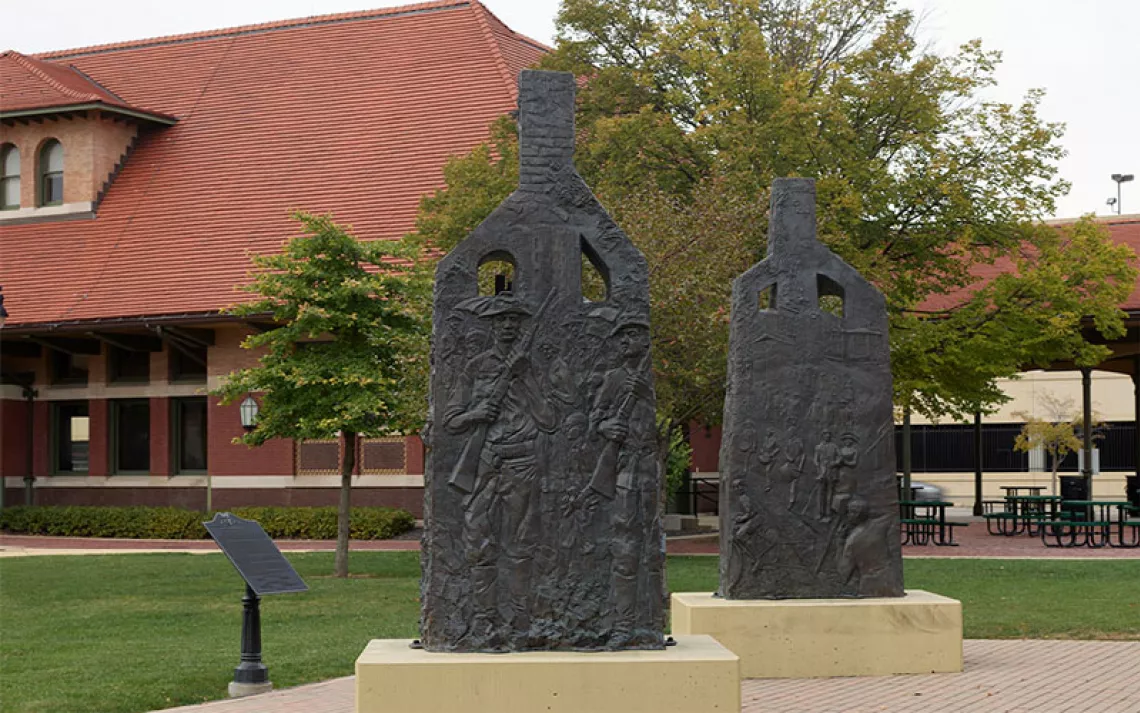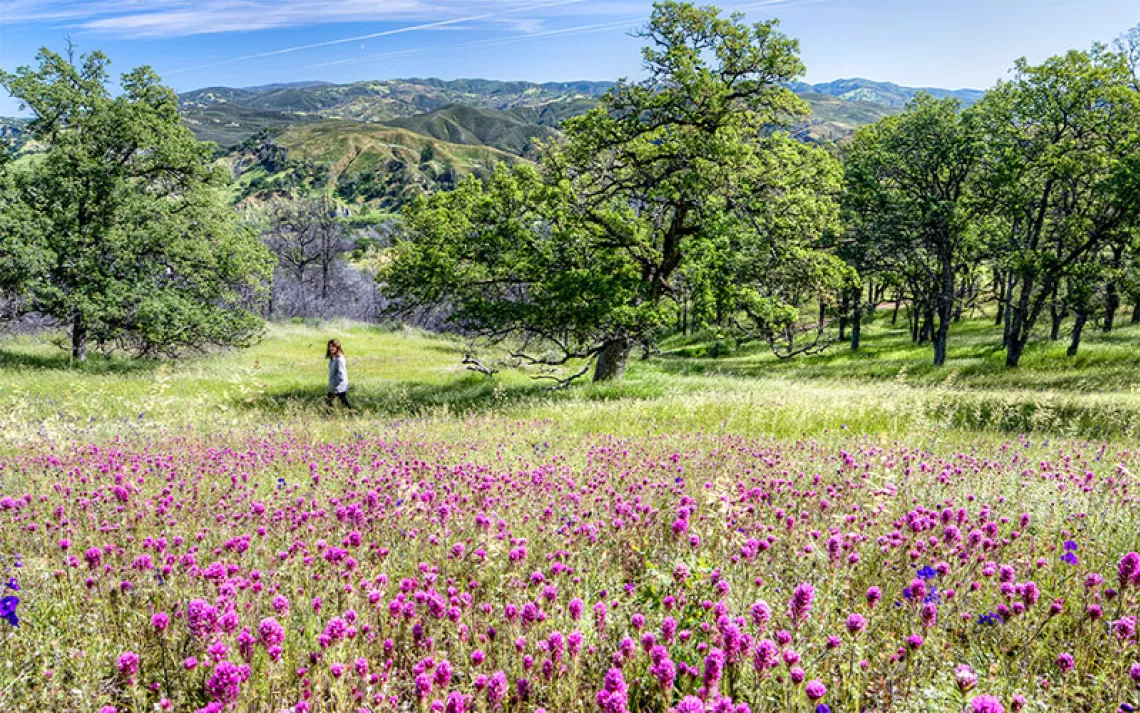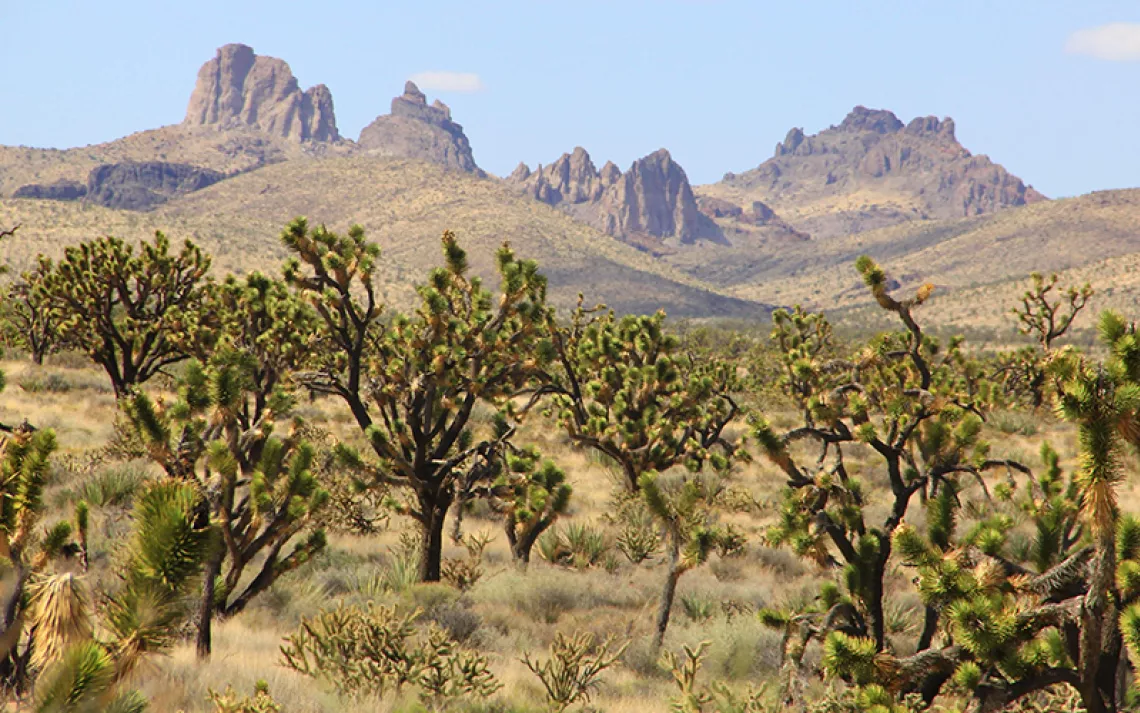Zinke Doesn’t Care What You Think
Percentage of Americans who want to shrink our national monuments: 1

Interior Secretary Ryan Zinke speaks during a news conference near Gold Butte National Monument in Bunkerville, Nevada, on July 30. | Photo by Steve Marcus/Las Vegas Sun via AP
To no one’s surprise, Interior Secretary Ryan Zinke has announced that he has wrapped up his review of national monuments established under the Antiquities Act, mandated by President Donald Trump, and that some of those public treasures are gonna shrink. Zinke was coy about exactly which ones were going to suffer “boundary adjustments,” saying only to the Associated Press that they were a “handful.” The Washington Post subsequently reported that Zinke had recommended cuts to the Bears Ears and Grand Staircase–Escalante National Monuments in Utah and the Cascade-Siskiyou National Monument in Oregon.
There are still no details of how extensively the monuments will be dismantled, although the New York Times reported that Bears Ears may be decimated, from its current 1.35 million acres to a paltry 160,000. In reaching this decision, Zinke wrote in a “slapdash” summary report that he ensured “that the local voice was heard by holding meetings with local, state, tribal, and other elected officials.” Among those groups, the tribes were uniformly opposed to shrinking the monuments’ borders—especially Bears Ears, which was established largely to protect its many sacred sites. Elected officials, however, have been largely hostile from the get-go, particularly in Utah, where the new monuments have been a burr under the saddle of that state’s congressional delegation since 1996, when then–President Bill Clinton established the Grand Staircase–Escalante monument.
In addition to local voices, however, there remained the inconvenient fact that millions of U.S. citizens strongly supported maintaining the existing monuments. The Interior Department’s 60-day public comment period elicited 2,836,268 responses; an analysis by the Center for Western Priorities showed that 98 percent favored maintaining or expanding existing monuments. Only 1 percent wanted to shrink them. (You can review the responses yourself at the Federal Register.) As Zinke characterized the latter, “those most concerned were often local residents associated with industries such as grazing, timber production, mining, hunting and fishing, and motorized recreation.” Guess which group won out?
Even Zinke had to acknowledge the weight of public opposition to his decision: “Comments received were overwhelmingly in favor of maintaining existing monuments.” Sounds like something you might pay attention to, right? Not necessarily—Zinke goes on to dismiss those millions of comments because their very number and unanimity “demonstrated a well-orchestrated national campaign organized by multiple organizations.” Said organizations included REI, hunting and fishing groups, and of course the Sierra Club and other conservation groups. In Trumpworld, the fact that opposition is organized marks it as illegitimate; to an autocratic administration, public opinion is of no interest.
 The Magazine of The Sierra Club
The Magazine of The Sierra Club



